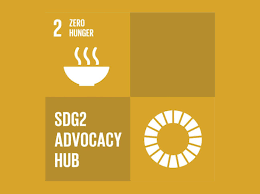“`html
The Importance of Sustainable Development Goal 2: Zero Hunger
Sustainable Development Goal 2, also known as Zero Hunger, is a critical objective set by the United Nations as part of the 2030 Agenda for Sustainable Development. This goal aims to end hunger, achieve food security, improve nutrition, and promote sustainable agriculture worldwide.
Zero Hunger is essential for creating a world where everyone has access to nutritious food and can lead healthy lives. Hunger and malnutrition not only have devastating effects on individuals and communities but also hinder social and economic development.
By focusing on Zero Hunger, countries commit to ensuring that all people have access to sufficient, safe, and nutritious food year-round. This goal also emphasizes the importance of promoting sustainable agricultural practices that protect the environment and support small-scale farmers.
Addressing hunger requires a multi-faceted approach that involves governments, businesses, civil society organizations, and individuals working together. Investments in agriculture, infrastructure, education, and social protection programs are crucial for achieving Zero Hunger.
Furthermore, promoting gender equality and empowering women in agriculture play a significant role in achieving sustainable food security. Women are key contributors to food production and often face barriers that limit their access to resources and decision-making power.
As we strive to meet Sustainable Development Goal 2: Zero Hunger by 2030, it is essential for all stakeholders to prioritize this issue and take concrete actions towards building a world free from hunger and malnutrition.
“`
Understanding SDG 2: Goals, Slogan, Challenges, and Its Role Alongside SDG 1
- What is the goal of SDG 2?
- What is the slogan of SDG 2?
- What is the problem in SDG 2?
- What is the purpose of zero hunger?
- What is SDG 1 and SDG 2?
What is the goal of SDG 2?
The goal of Sustainable Development Goal 2 (SDG 2) is to achieve Zero Hunger by ending hunger, achieving food security, improving nutrition, and promoting sustainable agriculture on a global scale. SDG 2 aims to ensure that all individuals have access to safe, nutritious, and sufficient food year-round. By focusing on Zero Hunger, the objective is to address the root causes of food insecurity and malnutrition while promoting sustainable agricultural practices that support small-scale farmers and protect the environment. This goal plays a crucial role in creating a world where everyone can lead healthy lives and thrive without the burden of hunger.
What is the slogan of SDG 2?
The slogan of Sustainable Development Goal 2, also known as SDG 2, is “Zero Hunger.” This succinct and powerful phrase encapsulates the overarching objective of SDG 2 to eradicate hunger, achieve food security, improve nutrition, and promote sustainable agriculture globally. The slogan serves as a reminder of the urgent need to address food insecurity and malnutrition to create a world where everyone has access to nutritious food and can lead healthy lives.
What is the problem in SDG 2?
The main problem addressed in Sustainable Development Goal 2 (SDG 2) is the prevalence of hunger and food insecurity around the world. Despite progress in reducing hunger in recent years, millions of people still lack access to an adequate and nutritious diet. Factors such as poverty, conflict, climate change, and unequal distribution of resources contribute to food insecurity. Achieving SDG 2 requires addressing these complex challenges through sustainable agricultural practices, improved food systems, equitable distribution of resources, and social protection programs to ensure that everyone has enough food to lead healthy and productive lives.
What is the purpose of zero hunger?
“`html
The purpose of Zero Hunger, a key component of Sustainable Development Goal 2, is to eradicate hunger and ensure food security for all individuals worldwide. By striving to achieve Zero Hunger, the goal aims to address the root causes of hunger, malnutrition, and food insecurity. This initiative seeks to promote sustainable agricultural practices, improve access to nutritious food, and empower communities to break the cycle of poverty and hunger. Ultimately, the purpose of Zero Hunger is to create a world where every person has enough food to lead a healthy and productive life, contributing to overall well-being and sustainable development.
“`
What is SDG 1 and SDG 2?
Sustainable Development Goal 1 (SDG 1) aims to end poverty in all its forms globally. It focuses on eradicating extreme poverty, ensuring social protection for vulnerable populations, and promoting equal economic opportunities for all. On the other hand, Sustainable Development Goal 2 (SDG 2) is centered around achieving Zero Hunger by ensuring food security, improving nutrition, and promoting sustainable agriculture practices worldwide. These two goals are interconnected as poverty and hunger are often closely linked, highlighting the importance of addressing both issues simultaneously to create a more equitable and sustainable future for all.

